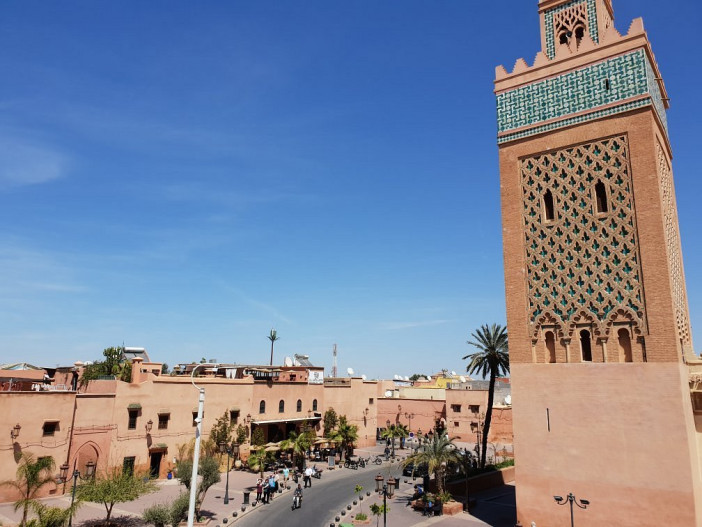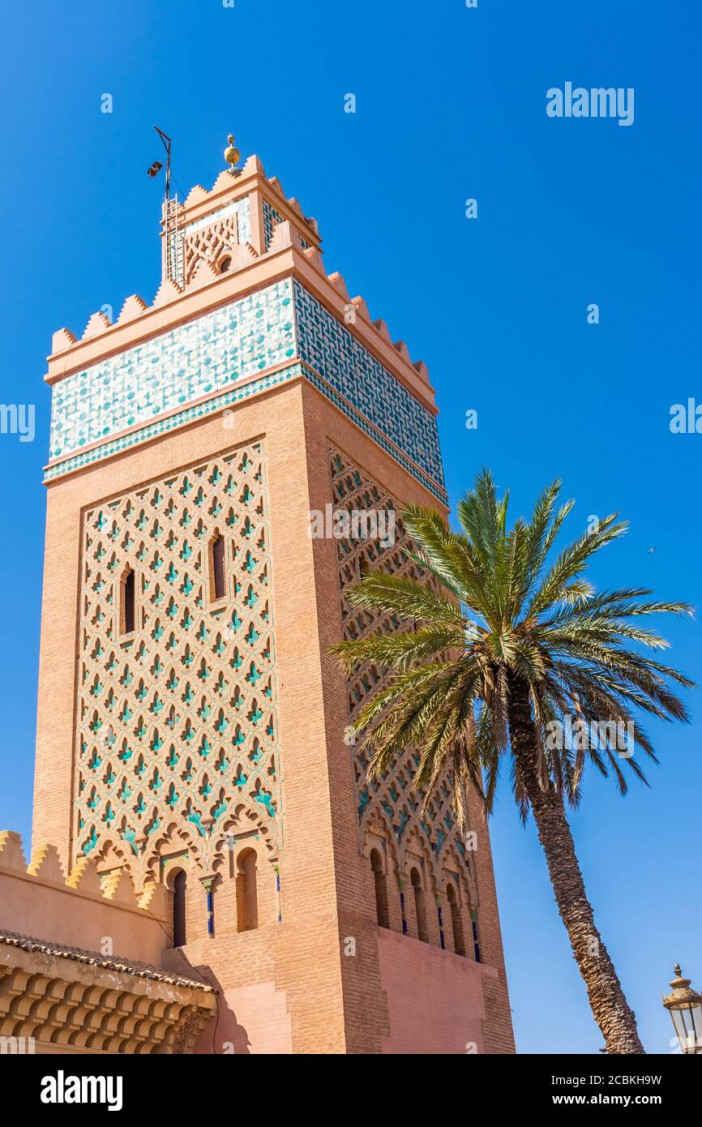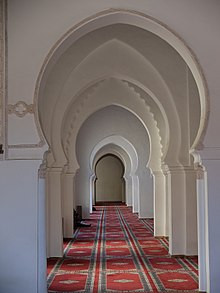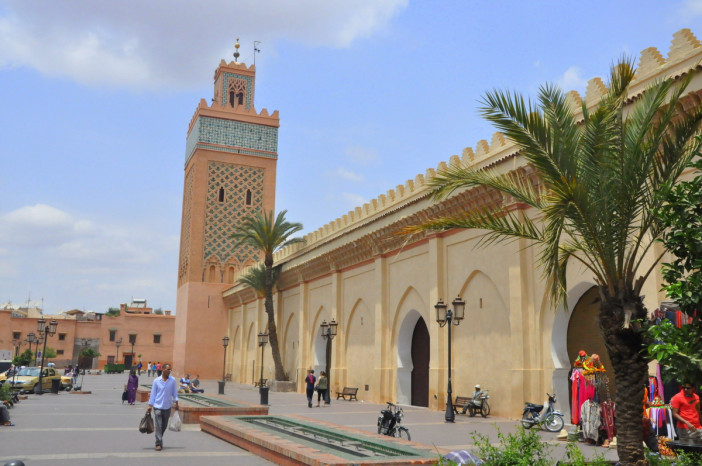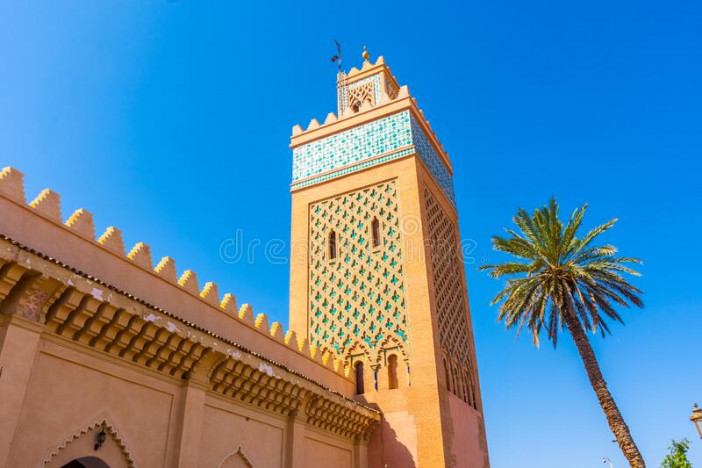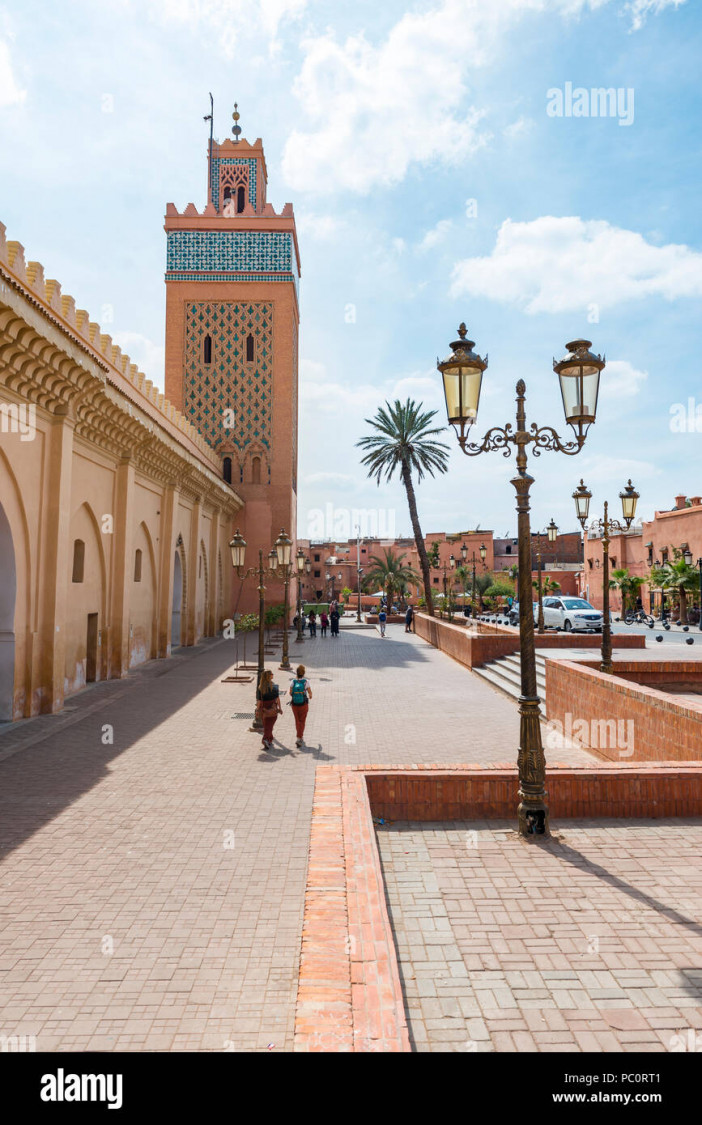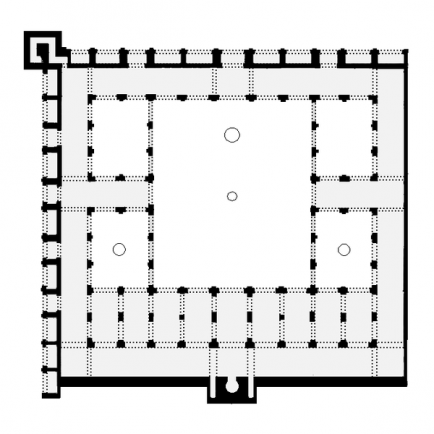The Kasbah Mosque
History
Construction of the mosque was probably begun around 1185 and finished by 1190, at the apogee of the Almohad Empire. It was commissioned by the Almohad Caliph Yaqub al-Mansour (ruled 1184–1199) as part of the newly created imperial kasbah (citadel) district which was to be the residence of the Almohad Caliph and the seat of government.This followed with a long tradition of rulers in the Islamic world (and beyond) who built palace-cities or separate royal districts. The Kasbah Mosque was built to be the congregational mosque for the caliph and for this royal district, where the ruler would go to attend prayers.
Even after al-Mansour and after the Almohad Empire had gone, the Kasbah Mosque was held in high esteem by the general population and subsequent rulers, and even competed with the Kutubiyya Mosque for prestige.As early as the Marinid era, rulers and important figures began to be buried in a cemetery just to the south of the mosque, eventually becoming the site of the Saadian dynasty's royal necropolis (referred to as the Saadian Tombs today)
Urban and Architectural
The mosque is in the old kasbah district of Marrakech and is located not far from the El-Badi Palace and from the current Royal Palace still used by the Moroccan king today. It is flanked by Place Moulay el Yazid on its eastern side. Most notably, on the southern side of the mosque are located the Saadian Tombs, a narrow necropolis with ornate mausoleums that housed the tombs of the Saadi Dynasty and now a major tourist attraction in Marrakech. The mosque is also very close to the city walls and to Bab Agnaou, one of the most notable gates in Marrakech.
The exterior of the mosque is imposing, with high walls crowned along the top by merlons above a row of corbels. Along the walls are large pointed horseshoe arches, many of which are now walled-in, while some frame the gates of the mosque. Some of the arches on the southwestern side of the mosque accommodate space for shops.
The minaret, like the more famous Kutubiyya minaret and other minarets in the Maghreb, has a square base (8.8 metres per side) and is divided vertically into two parts: a main body and a much smaller lantern (almost 4 metres per side) at the top. That said, the decoration of this minaret is different from that of the Koutoubia and would go on to become the prototype for many later minarets built in the Maghreb and al-Andalus.
Description
The mosque is roughly square in plan.The floor plan of the mosque is notable for being dominated by the size of its courtyard and for the division of the courtyard into five parts: a large central rectangular courtyard and four minor rectangular courtyards at its corners. The four smaller courtyards are placed in two symmetrical pairs around the main courtyard: two on the west side, two on the east, and separated from the main courtyard by an arcade of arches. The large roofless space formed by these five courtyards is surrounded by the indoor prayer hall on one side (to the south) and by a roofed gallery running along the other three sides. The space between each pair of auxiliary courtyards is taken up by a narrow roofed aisle as well – essentially projections of the surrounding gallery. The main courtyard features two fountains: one in the center and a larger one closer to the northern entrance. The two secondary courtyards that are closest to the prayer hall each feature their own central fountain as well. As in other mosques, these fountains serve for ablutions before prayer.
References
https://www.wander.am/travel/marrakech-2/places/kasbah-mosque-marrakech-192839.fr.html
https://www.alamyimages.fr/photos-images/marrakech-morocco-kasbah-mosque.html
Details
Location
Marrakesh , Marocco
Worshippers
4000
Owners
the Almohad caliph Yaqub al-Mansour
Year of Build
1185-1190
Area
7500
Drawings
Map
History
Construction of the mosque was probably begun around 1185 and finished by 1190, at the apogee of the Almohad Empire. It was commissioned by the Almohad Caliph Yaqub al-Mansour (ruled 1184–1199) as part of the newly created imperial kasbah (citadel) district which was to be the residence of the Almohad Caliph and the seat of government.This followed with a long tradition of rulers in the Islamic world (and beyond) who built palace-cities or separate royal districts. The Kasbah Mosque was built to be the congregational mosque for the caliph and for this royal district, where the ruler would go to attend prayers.
Even after al-Mansour and after the Almohad Empire had gone, the Kasbah Mosque was held in high esteem by the general population and subsequent rulers, and even competed with the Kutubiyya Mosque for prestige.As early as the Marinid era, rulers and important figures began to be buried in a cemetery just to the south of the mosque, eventually becoming the site of the Saadian dynasty's royal necropolis (referred to as the Saadian Tombs today)
Urban and Architectural
The mosque is in the old kasbah district of Marrakech and is located not far from the El-Badi Palace and from the current Royal Palace still used by the Moroccan king today. It is flanked by Place Moulay el Yazid on its eastern side. Most notably, on the southern side of the mosque are located the Saadian Tombs, a narrow necropolis with ornate mausoleums that housed the tombs of the Saadi Dynasty and now a major tourist attraction in Marrakech. The mosque is also very close to the city walls and to Bab Agnaou, one of the most notable gates in Marrakech.
The exterior of the mosque is imposing, with high walls crowned along the top by merlons above a row of corbels. Along the walls are large pointed horseshoe arches, many of which are now walled-in, while some frame the gates of the mosque. Some of the arches on the southwestern side of the mosque accommodate space for shops.
The minaret, like the more famous Kutubiyya minaret and other minarets in the Maghreb, has a square base (8.8 metres per side) and is divided vertically into two parts: a main body and a much smaller lantern (almost 4 metres per side) at the top. That said, the decoration of this minaret is different from that of the Koutoubia and would go on to become the prototype for many later minarets built in the Maghreb and al-Andalus.
Description
The mosque is roughly square in plan.The floor plan of the mosque is notable for being dominated by the size of its courtyard and for the division of the courtyard into five parts: a large central rectangular courtyard and four minor rectangular courtyards at its corners. The four smaller courtyards are placed in two symmetrical pairs around the main courtyard: two on the west side, two on the east, and separated from the main courtyard by an arcade of arches. The large roofless space formed by these five courtyards is surrounded by the indoor prayer hall on one side (to the south) and by a roofed gallery running along the other three sides. The space between each pair of auxiliary courtyards is taken up by a narrow roofed aisle as well – essentially projections of the surrounding gallery. The main courtyard features two fountains: one in the center and a larger one closer to the northern entrance. The two secondary courtyards that are closest to the prayer hall each feature their own central fountain as well. As in other mosques, these fountains serve for ablutions before prayer.


